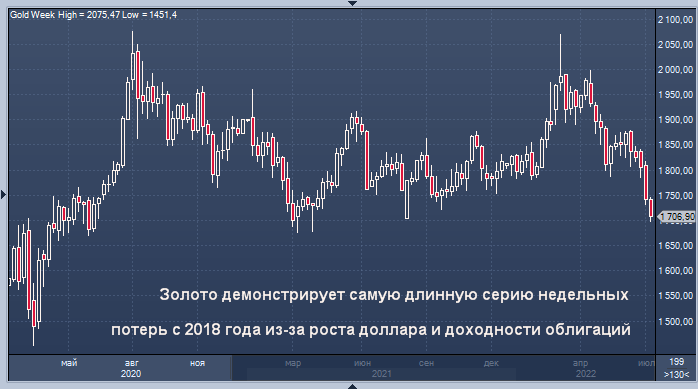Gold falls due to the growth of the dollar and bond yields. Unlike the latter, it does not generate interest income, although it is also considered a defensive asset.

Cash gold price chart in 1-week intervals
Gold is approaching its fifth weekly loss in its longest streak of such falls in almost four years, with its reputation as a safe haven shattered as investors become overly optimistic about the US dollar.
Precious metals have come under relentless pressure in the past month as investors turn to the dollar in the face of an increasingly hawkish Federal Reserve. This trade has received another boost this week due to skyrocketing inflation in the US.
Gold fell below $1,700 an ounce on Thursday for the first time in almost a year, while the Bloomberg dollar index climbed to a record high.
While high inflation and upside threats usually help gold, the precious metal is suffering as investors weigh in on the prospect of larger or more frequent rate hikes from the Fed trying to curb rising price pressures. Gold does not bear interest and, like other dollar-denominated commodities, it suffers when the dollar rises.
However, according to analysts at Commerzbank AG, investors’ expectations regarding the economic downturn in the US should benefit gold as a defensive asset.
“This is one of the reasons why we expect prices to rise in the coming months and quarters,” the statement said. “However, for this to happen, the still strong outflow of money from gold ETFs must stop and buying interest must return to the market.”
This week’s drop was a continuation of a series of tumultuous 2022 events for gold, which soared above $2,000 an ounce after the start of Russia’s NWO in Ukraine. It has since collapsed as the Fed raised interest rates and the dollar strengthened.
Gold fell 0.3% to $1,705.26 an ounce by 12:38 pm in London, down 2.2% for the week. This is about 17% below the March high. Silver rose, platinum remained virtually unchanged, and palladium declined.